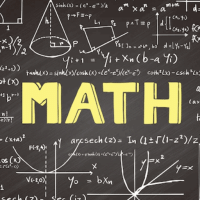JEE Exam > JEE Questions > Two glass prisms P1 and P2 are to be combined...
Start Learning for Free
Two glass prisms P1 and P2 are to be combined together to produce dispersion without deviation. The angles of the prisms P1 and P2 are selected as 4° and 3° respectively. If the refractive index of prism P1 is 1.54, then that of P2 will be
- a)1.48
- b)1.58
- c)1.62
- d)1.72
Correct answer is option 'D'. Can you explain this answer?
| FREE This question is part of | Download PDF Attempt this Test |
Verified Answer
Two glass prisms P1 and P2 are to be combined together to produce disp...
δ1 + δ2 = 0 ⇒ (μ – 1)A1 = (μ2 – 1)A2 ⇒ μ2 = 1.72

|
Explore Courses for JEE exam
|

|
Similar JEE Doubts
Two glass prisms P1 and P2 are to be combined together to produce dispersion without deviation. The angles of the prisms P1 and P2 are selected as 4° and 3° respectively. If the refractive index of prism P1 is 1.54, then that of P2 will bea)1.48b)1.58c)1.62d)1.72Correct answer is option 'D'. Can you explain this answer?
Question Description
Two glass prisms P1 and P2 are to be combined together to produce dispersion without deviation. The angles of the prisms P1 and P2 are selected as 4° and 3° respectively. If the refractive index of prism P1 is 1.54, then that of P2 will bea)1.48b)1.58c)1.62d)1.72Correct answer is option 'D'. Can you explain this answer? for JEE 2024 is part of JEE preparation. The Question and answers have been prepared according to the JEE exam syllabus. Information about Two glass prisms P1 and P2 are to be combined together to produce dispersion without deviation. The angles of the prisms P1 and P2 are selected as 4° and 3° respectively. If the refractive index of prism P1 is 1.54, then that of P2 will bea)1.48b)1.58c)1.62d)1.72Correct answer is option 'D'. Can you explain this answer? covers all topics & solutions for JEE 2024 Exam. Find important definitions, questions, meanings, examples, exercises and tests below for Two glass prisms P1 and P2 are to be combined together to produce dispersion without deviation. The angles of the prisms P1 and P2 are selected as 4° and 3° respectively. If the refractive index of prism P1 is 1.54, then that of P2 will bea)1.48b)1.58c)1.62d)1.72Correct answer is option 'D'. Can you explain this answer?.
Two glass prisms P1 and P2 are to be combined together to produce dispersion without deviation. The angles of the prisms P1 and P2 are selected as 4° and 3° respectively. If the refractive index of prism P1 is 1.54, then that of P2 will bea)1.48b)1.58c)1.62d)1.72Correct answer is option 'D'. Can you explain this answer? for JEE 2024 is part of JEE preparation. The Question and answers have been prepared according to the JEE exam syllabus. Information about Two glass prisms P1 and P2 are to be combined together to produce dispersion without deviation. The angles of the prisms P1 and P2 are selected as 4° and 3° respectively. If the refractive index of prism P1 is 1.54, then that of P2 will bea)1.48b)1.58c)1.62d)1.72Correct answer is option 'D'. Can you explain this answer? covers all topics & solutions for JEE 2024 Exam. Find important definitions, questions, meanings, examples, exercises and tests below for Two glass prisms P1 and P2 are to be combined together to produce dispersion without deviation. The angles of the prisms P1 and P2 are selected as 4° and 3° respectively. If the refractive index of prism P1 is 1.54, then that of P2 will bea)1.48b)1.58c)1.62d)1.72Correct answer is option 'D'. Can you explain this answer?.
Solutions for Two glass prisms P1 and P2 are to be combined together to produce dispersion without deviation. The angles of the prisms P1 and P2 are selected as 4° and 3° respectively. If the refractive index of prism P1 is 1.54, then that of P2 will bea)1.48b)1.58c)1.62d)1.72Correct answer is option 'D'. Can you explain this answer? in English & in Hindi are available as part of our courses for JEE.
Download more important topics, notes, lectures and mock test series for JEE Exam by signing up for free.
Here you can find the meaning of Two glass prisms P1 and P2 are to be combined together to produce dispersion without deviation. The angles of the prisms P1 and P2 are selected as 4° and 3° respectively. If the refractive index of prism P1 is 1.54, then that of P2 will bea)1.48b)1.58c)1.62d)1.72Correct answer is option 'D'. Can you explain this answer? defined & explained in the simplest way possible. Besides giving the explanation of
Two glass prisms P1 and P2 are to be combined together to produce dispersion without deviation. The angles of the prisms P1 and P2 are selected as 4° and 3° respectively. If the refractive index of prism P1 is 1.54, then that of P2 will bea)1.48b)1.58c)1.62d)1.72Correct answer is option 'D'. Can you explain this answer?, a detailed solution for Two glass prisms P1 and P2 are to be combined together to produce dispersion without deviation. The angles of the prisms P1 and P2 are selected as 4° and 3° respectively. If the refractive index of prism P1 is 1.54, then that of P2 will bea)1.48b)1.58c)1.62d)1.72Correct answer is option 'D'. Can you explain this answer? has been provided alongside types of Two glass prisms P1 and P2 are to be combined together to produce dispersion without deviation. The angles of the prisms P1 and P2 are selected as 4° and 3° respectively. If the refractive index of prism P1 is 1.54, then that of P2 will bea)1.48b)1.58c)1.62d)1.72Correct answer is option 'D'. Can you explain this answer? theory, EduRev gives you an
ample number of questions to practice Two glass prisms P1 and P2 are to be combined together to produce dispersion without deviation. The angles of the prisms P1 and P2 are selected as 4° and 3° respectively. If the refractive index of prism P1 is 1.54, then that of P2 will bea)1.48b)1.58c)1.62d)1.72Correct answer is option 'D'. Can you explain this answer? tests, examples and also practice JEE tests.

|
Explore Courses for JEE exam
|

|
Suggested Free Tests
Signup for Free!
Signup to see your scores go up within 7 days! Learn & Practice with 1000+ FREE Notes, Videos & Tests.























